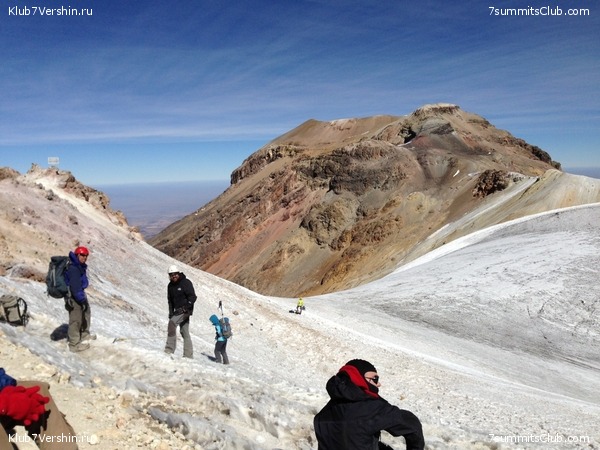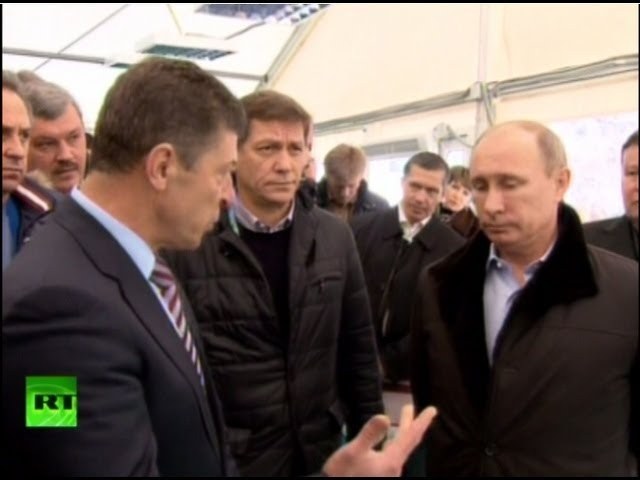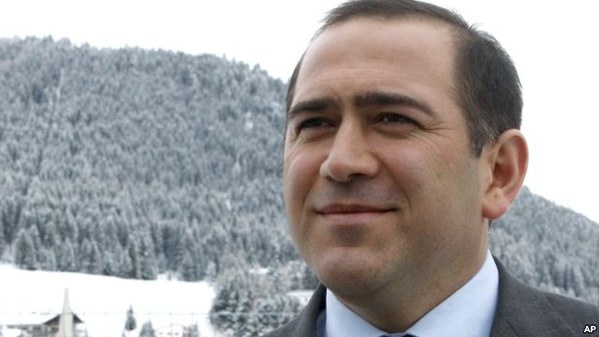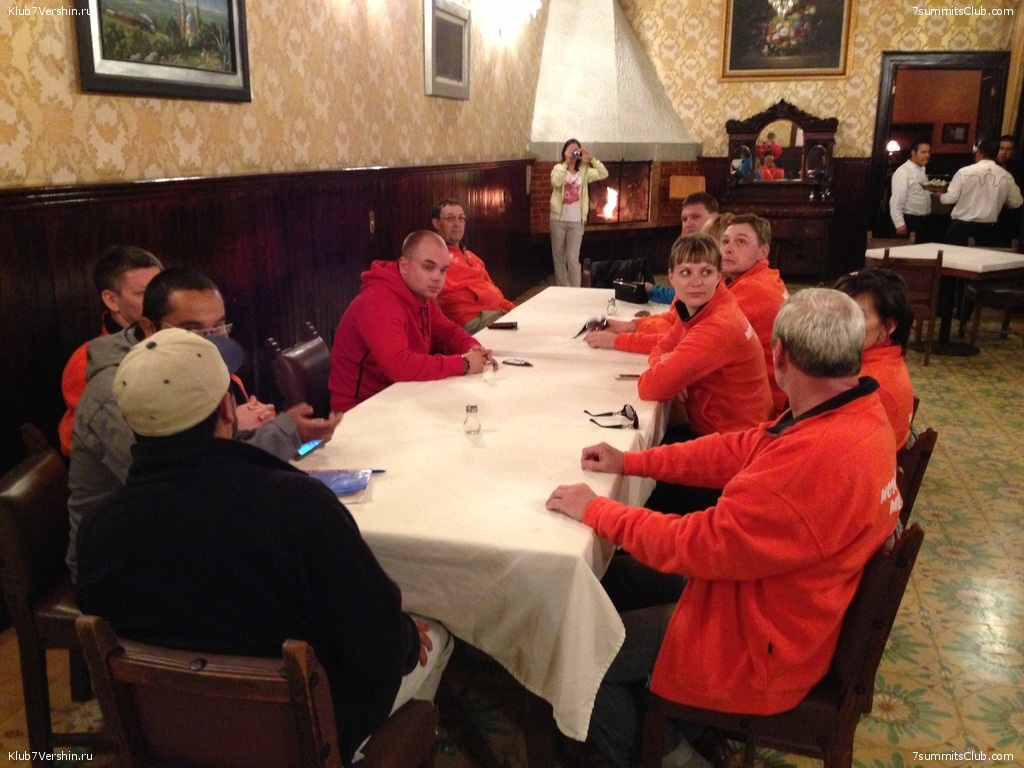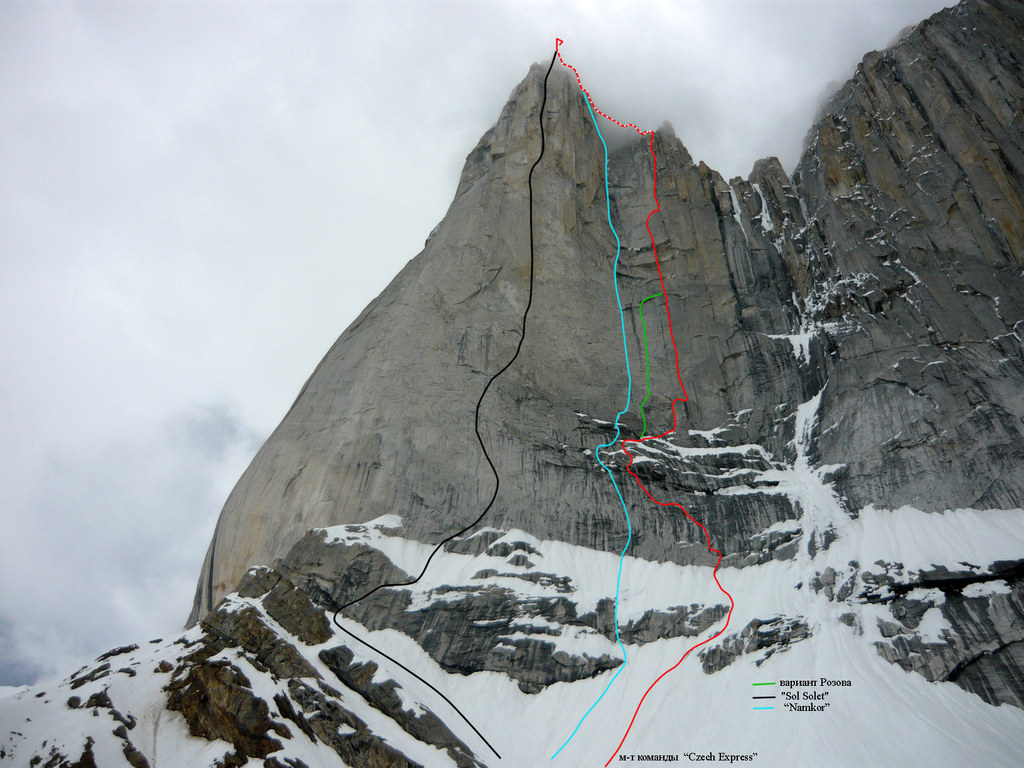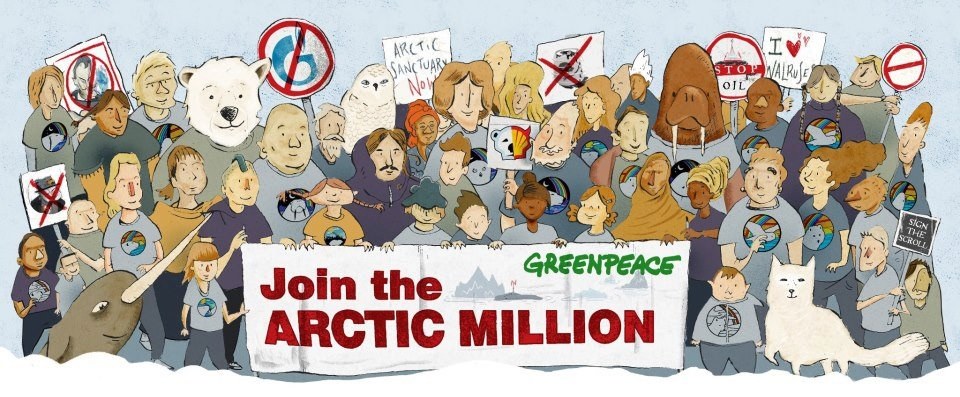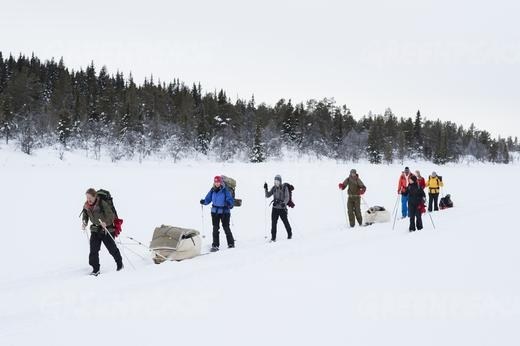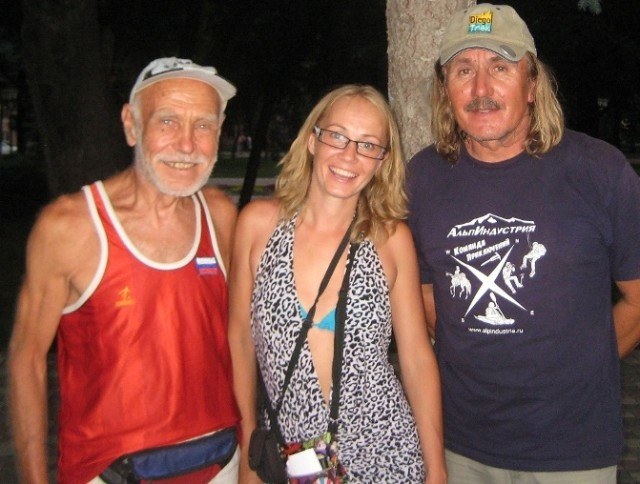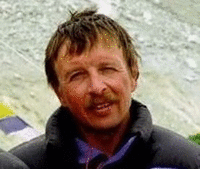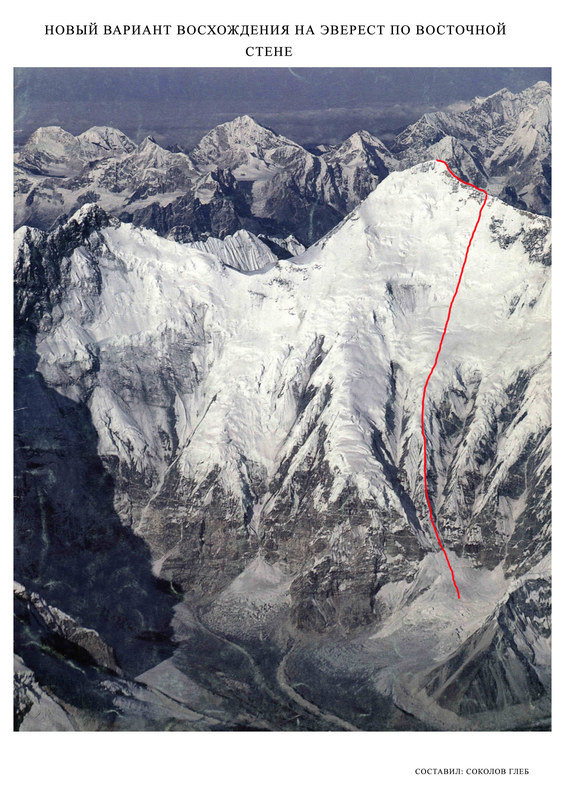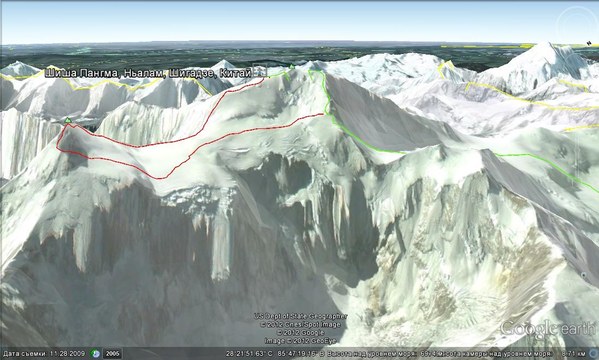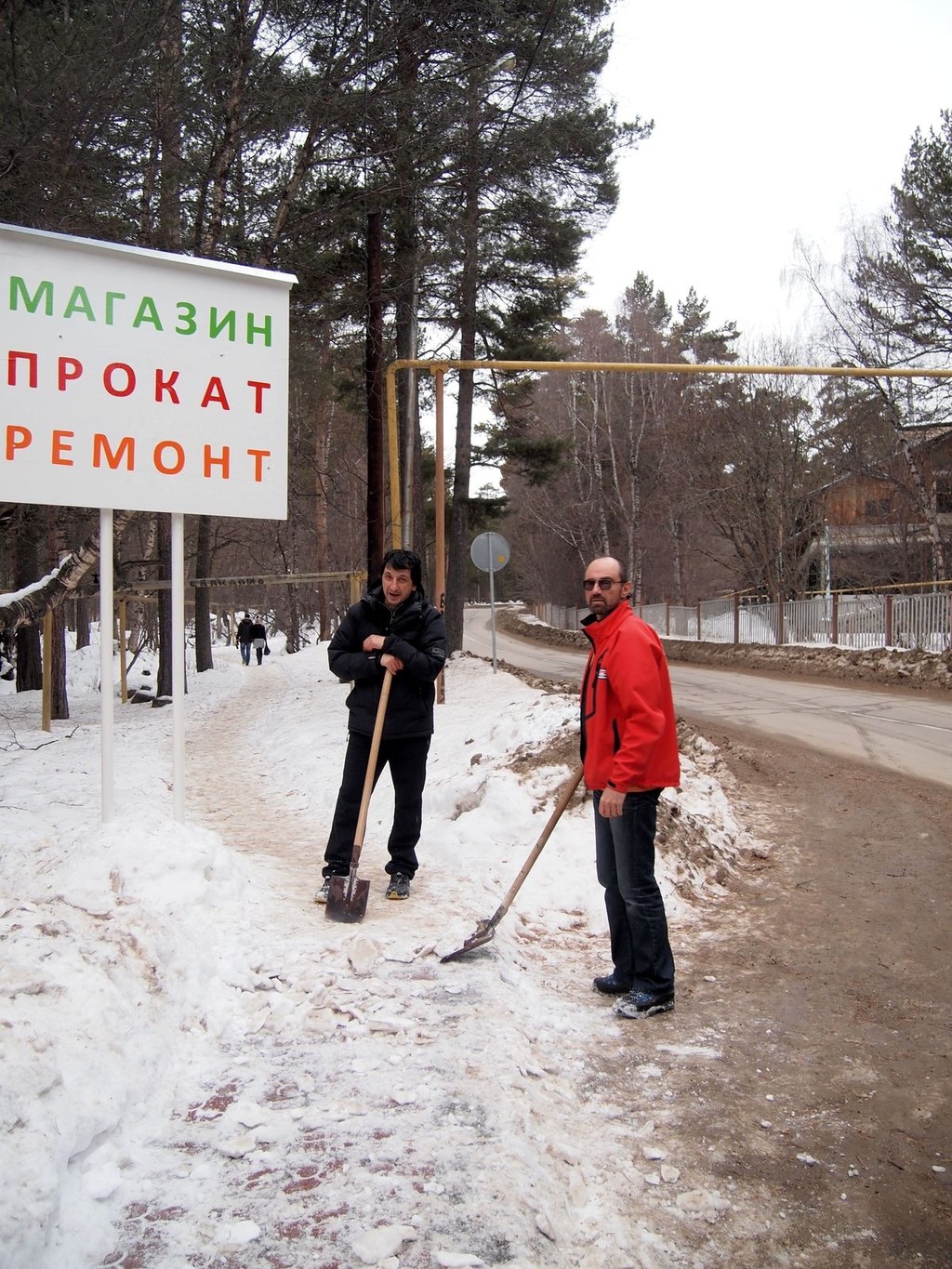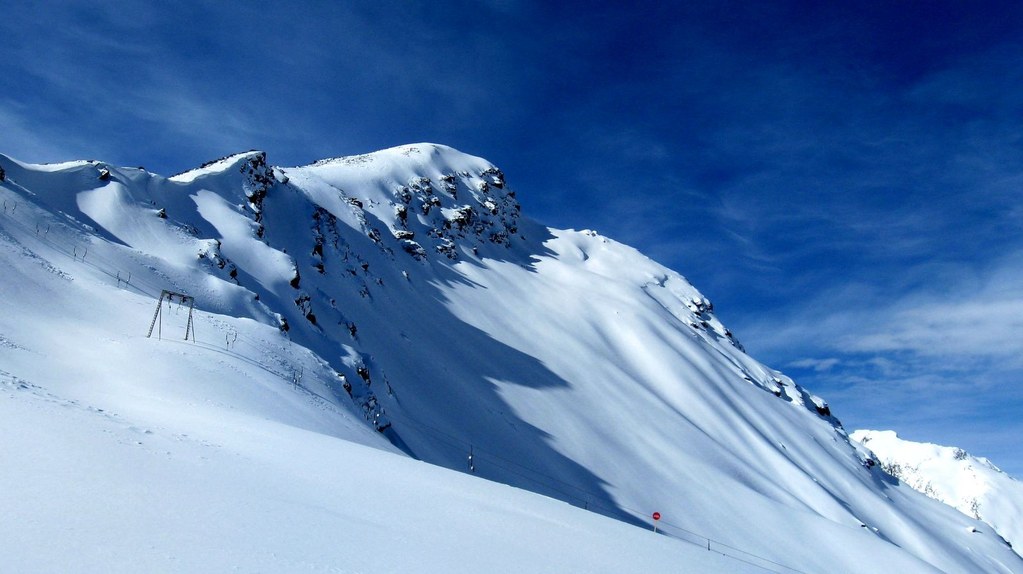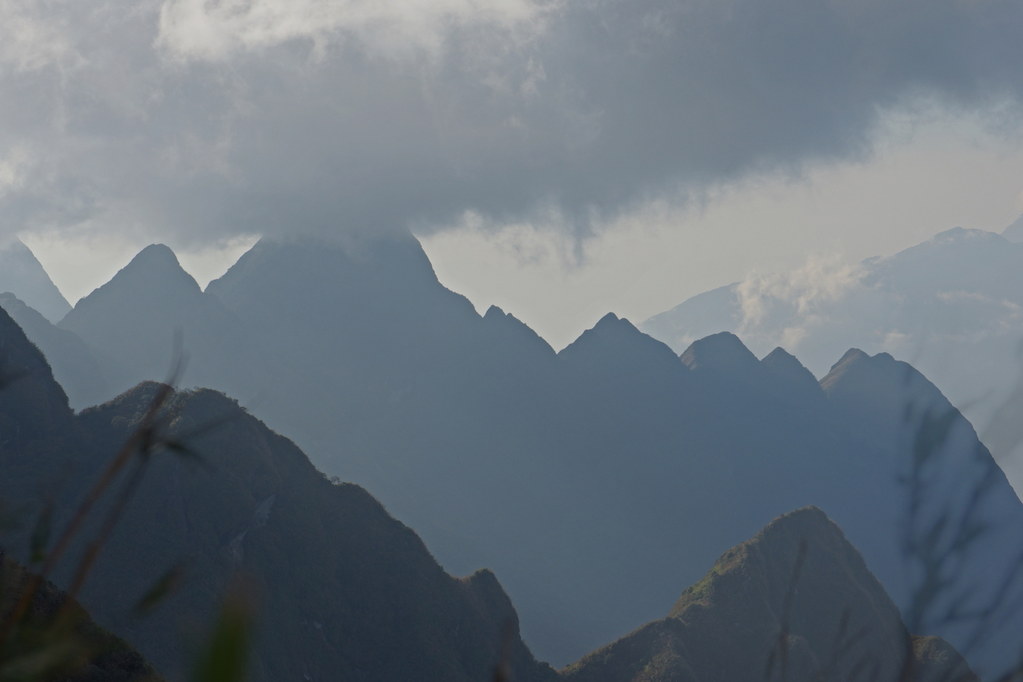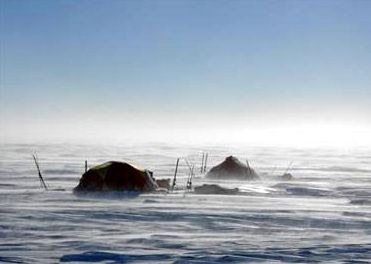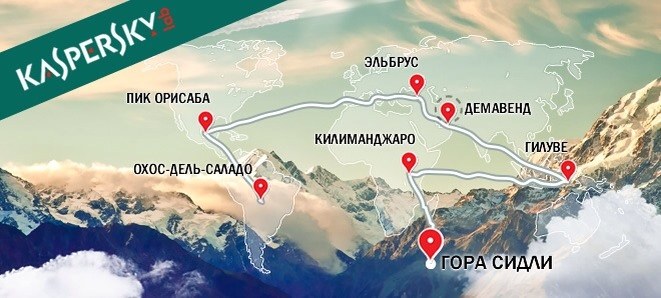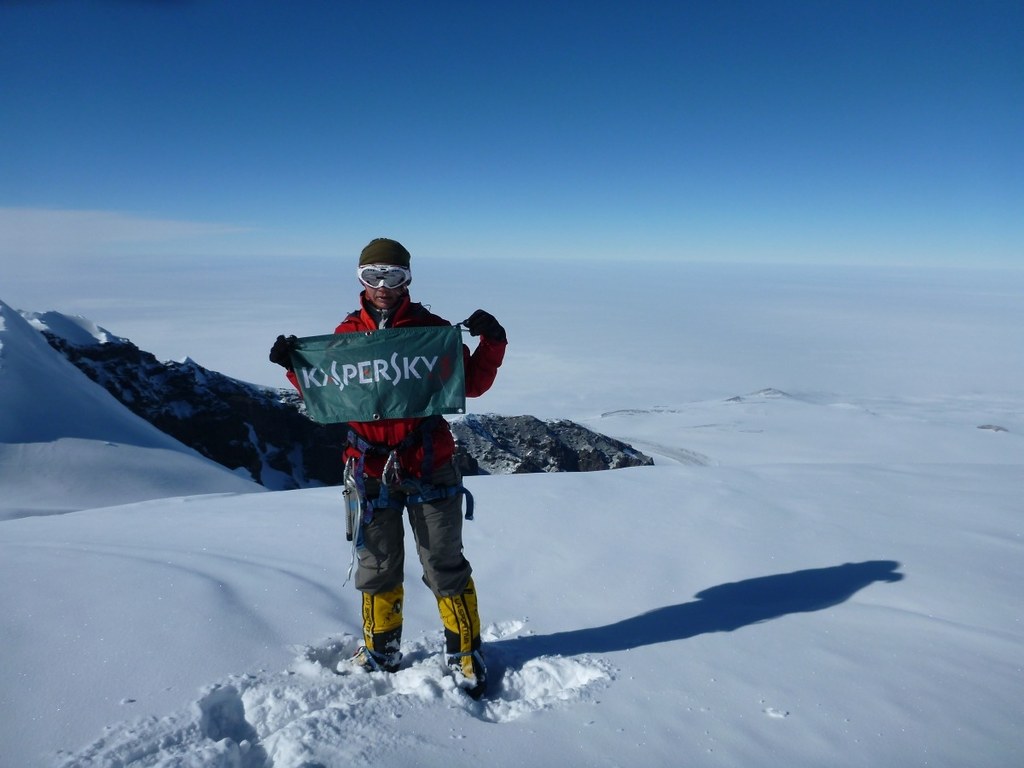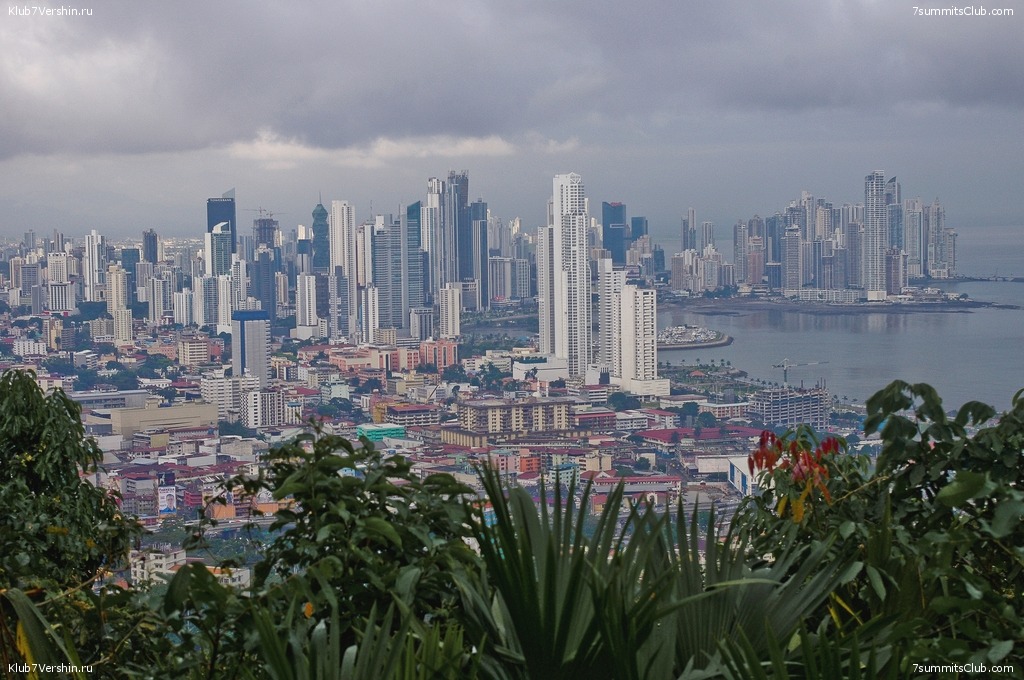All news: 2013 - Page 10
Trotsky Museum – it is an attraction in Mexico
Orizaba.
Alexander Abramov: Interesting museum. The main thing is that a lot of Mexicans come here. Interesting to see how the guides pronounced in Spanish, Russian names (Petrograd, Stalin, revolution). I have long wanted to go to the museum of ...
Alexander Abramov: Interesting museum. The main thing is that a lot of Mexicans come here. Interesting to see how the guides pronounced in Spanish, Russian names (Petrograd, Stalin, revolution).
I have long wanted to go to the museum of Trotsky in Mexico City. I do not know why ... Because this is probably a small part of Russia here.
He lived here, as I see, quite happily. Without the chic. But here he could work on changing the world ...
Denis Savelyev from Copiapo (Chile)
Ojos del Salado.
We're all alive. All participants feel fine. We in Copiapo. Today we're going to spend the night on the ocean shore. On the top of Ojos del Salado ascended: Lukyanov Yuri, Lukyanova Nadezhda, Bogucharova Lilia, Utvenko Sasha And I - Denis ...
We're all alive. All participants feel fine. We in Copiapo.
Today we're going to spend the night on the ocean shore.
On the top of Ojos del Salado ascended:
Lukyanov Yuri,
Lukyanova Nadezhda,
Bogucharova Lilia,
Utvenko Sasha
And I - Denis Savelyev.
Nearly reached the top (but now feel good and also going out with a group):
Lukasiewicz Ivan,
Salova Irina.
World 7 Summits News
McKinley.
Mount Denali. On the 100th Anniversary of the Historic First Summit of Mt.McKinley (Denali), Descendants to Follow in Their Relatives' Footsteps on the 'Denali 2013 Centennial Climb' In 1913, 21-year old Alaska Native Walter Harper ...
Mount Denali.
On the 100th Anniversary of the Historic First Summit of Mt.McKinley (Denali), Descendants to Follow in Their
Relatives' Footsteps on the 'Denali 2013 Centennial Climb'
In 1913, 21-year old Alaska Native Walter Harper became the first man in history to reach the highest point in North America. Now, a century later, a team of descendants will follow the same path to the summit with the goal of inspiring Native Alaskan youth by sharing the story of this unheralded achievement.
Denali 2013 Centennial Climb Team
This achievement is something young Alaska Natives can be very proud of, and it will help them believe that anything is possible. It’s also a story that should be shared with audiences around the world.
Fairbanks, Alaska (PRWEB) February 05, 2013
A team of descendants of the original expedition who first successfully climbed Mt. McKinley 100 years ago will attempt the same climb this spring, bearing a message of achievement to young Alaska Natives.
Dubbed the Denali 2013 Centennial Climb, Dana Wright, Ken Karstens, Ray Schuenemann, Dan Hopkins, and Mark Lattime will begin their ascent on June 7, 2013, a hundred years after their forebears reached Denali’s summit. Denali is the Alaska Native name for McKinley, meaning “The Great One.”
Wright is the great-grandnephew of Walter Harper, the 21-year old Athabascan who was the first person on Denali’s peak. Ken Karstens and Schuenemann, great-grandsons of Harry Karstens, who was second on the mountain and a team leader, will climb. Hopkins is the great-great nephew of Episcopal Archdeacon Hudson Stuck, who was also a team leader. Lattime, who is the Episcopal Bishop of Alaska, plans to hold a Eucharist on the mountain and honor the memory of Stuck.
The Centennial team will follow the same treacherous and complex route on the North Side of Denali through McGonagal Pass, and up the Muldrow Glacier and along Karstens Ridge into the great basin between Denali’s peaks.
The route foiled many attempts by previous expeditions before the 1913 summit, and was the only practicable route at the time. Modern mountaineers use the west buttress route from the airstrip on the Kahiltna Glacier.
The team particularly wants to note the achievements of Harper and John Fredson, a 16-year old Athabascan who lived off the land while caring for a team of sled dogs and the base camp for over a month alone waiting for the team to return, by sharing their adventure with young people via the Internet.
The team has partnered with FindingLife, a nonprofit organization that combines adventure, education, technology, film and charitable initiatives to inspire young people to create positive change. Participants will learn while interacting live online with expedition members, watch video webisodes from the mountain and follow the team’s progress via GPS tracking.
The National Congress of American Indians and the Alaska State Board of Education have endorsed the climb.
“This achievement is something young Alaska Natives can be very proud of, and it will help them believe that anything is possible,” said Mike Harper, grandnephew of Walter Harper. “It’s also a story that should be shared with audiences around the world.”
*For webisodes and to interact with the climbers, sign up for free at http://www.denali2013.org
*Donations towards the expedition can be made at http://www.firstgiving.com/fundraiser/denali-
centennialclimb/denali-centennial-climb-2013
*Media Resources - For bios & images from the 1913 climb visit: http://denali2013.org/media-2/image-downloads/
Should Mount McKinley, the highest mountain in North America, be officially named as Denali -- its Athabascan name?
US Sen. Lisa Murkowski and others argue that Congress should officially recognize the Alaska Native name, particularly since President McKinley never set foot on Alaskan soil.
-------------------------------------------------------------------------------------------
KILIMANJARO
KILIMANJARO, regarded as the highest peak on the African Continent and the highest free standing mountain in the world has of late started to be taken for granted.
That is because limbless, handicapped and even little children have been announcing that it was quite easy for them to climb the giant feature right to the top and live to tell.
Then you also get women young and old, international pop stars and practically every Tom, Harry and Dick from any part of the region, country and globe thinking climbing to the 5900 metres highest point was easy as ABC, Do-Re-Mi or 1-2-3.
"But the mountain itself is alive," said one of the old veterans in the Kibosho area recently, adding that, the mountain can hear, remember and even kill should it be made angry. It was probably made angry last week when despite major preparations, worldwide announcements and presidential endorsement, a team of 100 pilots who planned to make history of being the first to paraglide from Uhuru peak got more than they bargained for.
Actually suffice to say that it is now official; nobody can ever fly from Mount Kilimanjaro using gliders; because those 100- plus international pilots recorded historical failure after attempting to perform the feat for 12 days, before deciding that it was hardly as easy as ABC or Do-Re- Mi.
The smitten team making up the maiden 'Wings of Kilimanjaro' paragliding adventure from Africa's highest peak, started their descent on foot in the night of Wednesday, February 6 and once on the ground, none of them was to be seen, probably were still nursing their 'wounds of defeat.'
The pompous and fanfare that accompanied them during their ascent were reduced to smitten state of reclusiveness and even as we went to press on Sunday, emails sent to the organizers for their statement were still not replied. Never mind, they are probably still recovering from the mountain hardships (but toddlers who climbed Kilimanjaro in past recovered faster), so they may soon respond ... all the way from Australia that is.
The pilots' team included some of the world renowned paragliding champions like Mr Robert (Bob) Gardner, Colin Downer, Angel Rivera, Colin Davies, Daniel Retz and Dr Fernando Davalos. The Tanzania National Parks through its Public Relations Manager, Mr Paschal Shelutete have admitted that, the Moshi based, Giant Mountain, towering at the height of 5900 metres, still had many surprises left for international climbers and it won't be defeated easily.
--
"Kilimanjaro has been attracting many climbers for years to an extent that people started taking it for granted, but we have just seen that there are many things that cannot be done easily from the world's tallest, free-standing mountain," said Mr Shelutete adding that the failure of expert gliders to fly from Uhuru peak should pose a new challenge that the entire globe should now try to accomplish.
On his part, the Chief Conservator for Kilimanjaro National Park, Mr Erastus Lufungulo, said the failed pioneer paragliding attempt on the mountain should prompt new studies and researches on how similar adventures can be accomplished successfully in future.
"The 100 pilots who took part in the 'Wings of Kilimanjaro,' organized event, happened to have been outstanding experts, some with world records, who have managed to conquer many mountains in the past but their failed attempt at Kilimanjaro goes to show that Tanzania has many surprises in store for global adventurers," said Mr Lufungulo.
According to the conservator, it took years before man could eventually reach the peak of Kilimanjaro and it may take more years before paragliding could ever be accomplished on the Mountain which records over 52,000 climbs in a year, the first recorded person to reach its summit was Mr Hans Meyer from Germany who peaked in 1889.
A new history and record was expected to be drafted last week, when the first batch of para-gliders were to fly from Uhuru peak and land in Kibosho but it never happened with them reporting gushing winds and claustrophobic cloud cover and of course mountain sickness.
The unpredictable weather and other mountain effects started to take toll on the climbers with many falling sick and cutting down the number from 100 to just 69 but when 20 more had to be rescued from the mountain it took the adventurers a few more hours before admitting defeat and trekking down via Mweka route. And that was the last to be heard of the Paragliders and even their manager Ms Paula McRae has gone AWOL, not responding to phones or emails. Goodbye Mountain Fliers!
Five climbers on the top of Ojos del Salado
Ojos del Salado.
Today at 1 p.m. Chilean time, five climbers 7 Summits Club reached the top of the highest volcano of the world Ojos day Salado. The ascent was a very, very hard. There was a strong wind, despite the good weather forecast. Therefore, we have ...
Today at 1 p.m. Chilean time, five climbers 7 Summits Club reached the top of the highest volcano of the world Ojos day Salado. The ascent was a very, very hard. There was a strong wind, despite the good weather forecast. Therefore, we have two members out of the climb. But five of us overpowered it. Now, we all went down to the camp Atacama. Tomorrow we will wrap up camp and leave. Bye everyone!
One more volcano for the group of Alex Abramov
The Olma team coming in 2 a.m. from the Base Camp, reached the summit of Istaksiuatl at 12:30 p.m. local time. Alex Abramov was the main guide of this group.
The Olma team coming in 2 a.m. from the Base Camp, reached the summit of Istaksiuatl at 12:30 p.m. local time. Alex Abramov was the main guide of this group.
North Caucasus Resorts Head Resigns
Elbrus.
13 February 2013 . The Moscow Times. State-owned North Caucasus Resorts, which oversees a project to develop that region as a tourist destination, said it appointed its new acting CEO because the former one had resigned due to health ...
13 February 2013 . The Moscow Times.
State-owned North Caucasus Resorts, which oversees a project to develop that region as a tourist destination, said it appointed its new acting CEO because the former one had resigned due to health reasons.
"Alexander Sadikov, who until today held the post of deputy CEO for government relations and infrastructure development, has been appointed as the acting CEO of North Caucasus Resorts. The former CEO, Alexander Nevsky, has resigned due to health reasons," it said in a statement posted on the company's website.
The press office said the reshuffle had nothing to do with the situation around the company's president and chairman of its board of directors, Akhmed Bilalov, according to Interfax.
Last week, President Vladimir Putin ordered to dismiss Akhmed Bilalov from "all positions" after blaming Bilalov, who was also a vice president of the Russian Olympic Committee, for delays and cost overruns at an Olympic ski jump site in Sochi.
Russia Today about Akhmed Bilalov dismissing and more about Winter Olympic in Sochi
http://rt.com/news/sochi-2014-putin-official-dismissal-635/
Heads have rolled after Vladimir Putin’s inspection of Sochi-2014 Winter Olympic venues and infrastructure under construction. A dramatic cost overrun combined with schedule disruptions of some sites has resulted in tough measures.
Exactly one year ahead of the beginning of Winter Olympic in Sochi, the Russian president arrived in the future Games capital on Wednesday to get to know personally how the construction and preparation works are advancing. He was so disappointed that the next day he fired the vice-president of Russia's Olympic Committee, who has been directly involved, including financially, in the construction of the most troubled Olympic venue.
On Wednesday Russian state TV showed a rare instance of Vladimir Putin publicly rebuking the country’s high officials – in this case those responsible for preparation to the Sochi-2014 Winter Games. And the men had to make guilty excuses.
The ‘Olympians’ had to admit that in some cases the schedule has been missed by years and costs skyrocketed.
Putin learned that the RusSki Gorki ski jump facility is two years behind schedule and still unfinished, while its cost has ballooned from an initial 1.2 billion rubles (US$40 million) to 8 billion rubles ($265 million).
Deputy prime minister, and head of the Olympic preparatory commission, Dmitry Kozak told Putin that responsible for the situation is a private construction company that was working at the site from the start.
Having learnt that the delinquent company belongs to the vice-president of Russia's Olympic Committee Akhmed Bilalov, the Russian president made some pointed remarks.
“So the guy is vice-president of country’s Olympic Committee? And he is doing that kind of job, dragging the project backwards?” Putin asked.
The president demanded information on Bilalov, what positions he occupies and which other projects he oversees. It turned out that Bilalov also heads another multi-billion-ruble project, the ‘North Caucasus Resorts’ project to create world-class ski resorts in the Russia’s south.
“Good job, fellows. Let’s move on,” Putin said, urging the entourage to get to another venue with better construction results.
“Cost increases are possible during construction, but they must be justified,” Putin said in televised remarks later. "The most important thing is to make sure that no one stole anything and there is no groundless rise in cost,” he stressed.
On Thursday, Deputy Prime Minister Dmitry Kozak told reporters in Sochi that Akhmed Bilalov is being dismissed from all posts and positions.
Kozak explained that infraction of obligations Bilalov had as an investor of an Olympic venue became a “problem for the Russian Federation, not its citizen Akhmed Bilalov."
Akhmed Bilalov
“Such people [who do not fulfill their obligations] should not work either in the national Olympic Committee or the North Caucasus Resorts project,” Kozak concluded.
Although the delegation of the International Olympics Committee which joined Putin in Sochi is satisfied with the current progress of the works, it had to stress that the ski jump facility construction schedule is really pressing.
Vladimir Putin had to soothe them, saying that, "I do hope that despite all the technical difficulties, everything will be commissioned on time.”
The Sochi-2014 Winter Games are already considered to be the most expensive Olympics ever. With estimated costs of $50 billion, it surpassed the previous record holder, the 2008 Beijing Summer Olympics.
And it definitely stands more than twice as high as the London-2012 Games, which were estimated at only $19 billion.
This huge cost can be explained by the fact that 85 per cent of the infrastructure had to be built from scratch to replace the city of Sochi’s decades-old Soviet-built outdated communications, roads, power stations, tunnels in the mountains etc.
Jean-Claude Killy, chair of the International Olympic Committee's coordination commission for the Sochi Games, said that the job already done is outstanding and no less than 80 per cent of the overall job is done –only the RusSki Gorki ski jump facility is worrisome.
OLMA team reached the summit of the volcano La Malinche
Orizaba.
Hello! This is Alex Abramov from Mexico. Today, the team OLMA reached the summit of La Malinche volcano. Climbing was more difficult than we thought. We walked up hours, and four hours we were going down. That is, all get 11 hours. At ...
Hello! This is Alex Abramov from Mexico. Today, the team OLMA reached the summit of La Malinche volcano. Climbing was more difficult than we thought. We walked up hours, and four hours we were going down. That is, all get 11 hours. At the top there was no snow. All in all, everyone was happy. We walked down into town late at night. Tomorrow we move to another place. Goodbye!
Ural climbers start to climb the face of Amin Brakk in winter
The team of climbers from the Urals (Sverdlovsk region, Nizhny Tagil) flew on February 7 in Pakistan, to the valley Nangma (gorge Conde). The goal of the team was to climb the giant face of Amin Brakk by the route Sol Solet. This will be ...
The team of climbers from the Urals (Sverdlovsk region, Nizhny Tagil) flew on February 7 in Pakistan, to the valley Nangma (gorge Conde). The goal of the team was to climb the giant face of Amin Brakk by the route Sol Solet. This will be the first attempt to climb it in winter. The team is now started to work. According to recent reports, the climbers decided to climb a new route.
Team. Expedition leader Sergei Grachev. Two well-known masters: Alexander Shabunin and Evgeny Dmitrienko (five-time champion of Russia). Also, two young climber Andrew Glen and Michail Glushkov.
Alexander Abramov arrived in Mexico with a group of company OLMA
Orizaba.
The expedition begins. Tina Taova a specialist for corporate clients of 7 Summits Club arrived in Mexico City in advance. Today she met the main group (10 participants) and the main guide – Alex Abramov. This expedition is organized ...
The expedition begins. Tina Taova a specialist for corporate clients of 7 Summits Club arrived in Mexico City in advance. Today she met the main group (10 participants) and the main guide – Alex Abramov. This expedition is organized by the OLMA company . The plans: excursions, climbing two volcanoes and then, a rest in Acapulco.
Lyudmila Korobeshko in the star team of Greenpeace goes to the North Pole
From the 1st to the 5th of February in the legendary village of Vinstra, Norway, Greenpeace held a training camp. The members of team are preparing to commit a ski expedition to the North Pole, which will be held in April this year. Vinstra ...
From the 1st to the 5th of February in the legendary village of Vinstra, Norway, Greenpeace held a training camp. The members of team are preparing to commit a ski expedition to the North Pole, which will be held in April this year. Vinstra village is famous because there trained famous Amundsen. Now the team from all the world was here. In April, these people will get to the North Pole so-called "time capsule." Read about it below.
Director of the 7 Summits Club Lyudmila Korobeshko will represent Russia in the expedition. She was in the training camp.
Greenpeace action was supported by more than 2.55 million people. These include musician Paul McCartney, rock band Radiohead and actor Jude Law. They all believe that the Arctic – it is not a place for the oil industry, commercial fishing, and war, and the area around the North Pole must become a worldwide wildlife sanctuaries.
Names people signed the document will be printed on the plate of an inert metal and placed in 17-inch glass "time capsule." In April 2013, an international expedition of Greenpeace delivers a capsule to the North Pole, where it will be sunk to the bottom of the Arctic Ocean. At the dive site, they set a flag of the “capsules Future”, symbolizing peace and hope. The flag will be created by children: in the competition for the best design it involves thousands of students from around the world.
Greenpeace intends to raise the capsule in 2050, by which time we will know whether mankind could save the Arctic.
The collection of signatures in support of the Arctic will continue on, they will be used in negotiations with politicians from different countries on the establishment of the reserve in the Arctic.
FREQUENTLY ASKED QUESTIONS
WHAT’S THIS CAMPAIGN ABOUT?
We’re coming together to push for action to save the Arctic. That means creating a global sanctuary in the uninhabited area around the North Pole (the region some people call the High Arctic) and a ban on offshore oil drilling and industrial fishing in the wider Arctic region.
WHAT’S A GLOBAL SANCTUARY?
It’s an area of the globe under legal protection that’s off-limits to the polluters – a place dedicated to science and research. In Antarctica – at the other end of the Earth – a World Park was declared, so the destructive mining industry can’t operate there. We’re going to create something similar at the top of the world. Right now it belongs to all of us, it’s classified as the High Seas and the international seabed, but the Arctic states are submitting claims, saying it’s their territory. They want to open up the seabed to the polluters, so before the countries and corporations can get their hands on it, we’re going to secure it for all life on Earth.
AND THE FIRST STEP IS A UN RESOLUTION?
World leaders gather every September at the UN HQ in New York. We want them to pass a UN resolution demanding legal protection for the Arctic. That means persuading more than half the world’s governments that this needs to happen. A resolution at the UN General Assembly would create the momentum we need to push for an agreement to create the sanctuary and a ban on offshore oil drilling and unsustainable industrial fishing in the region.
HOW WILL YOU TAKE MY NAME TO THE NORTH POLE?
When you sign the petition, your name will be added to an Arctic scroll with the names of others who have joined our movement to defend the Arctic. In April of 2013, we will embark on an expedition to the North Pole. When we get there, we’ll place the scroll of names in a time capsule and lower it through the ice and 4km of freezing water to the seabed. Wherever you are, you’ll know when you look north that your name is planted permanently on the bottom of the ocean at the top of the world as a statement of your commitment to protect the Arctic.
WHAT IS THE FLAG FOR THE FUTURE?
When we plant the time capsule at the North Pole, we’ll also mark the spot with a Flag for the Future, designed by the youth of the world in a global competition. This flag represents our joint commitment to save the Arctic and sends a message of peace, hope, and global community to the world. Greenpeace is currently working with the Worldwide Association of Girl Guides and Girl Scouts to run the competition to design the flag. The competition runs until February 2013. The designs will then be judged by a panel including fashion designer Vivienne Westwood in March 2013. For more information about how to enter, please visitwww.flagforthefuture.org.
WHEN WILL THE EXPEDITION TO THE NORTH POLE TAKE PLACE, AND HOW CAN I FOLLOW IT?
The expedition will take place in early April 2013 and last for approximately five days. Our expedition party will include representatives from around the world and we will record and share their journey.
WON’T LEAVING THE TIME CAPSULE ON THE SEAFLOOR BE LITTERING?
Not at all. We've been working with experts to make a capsule that will stand the test of time without disturbing this amazing marine environment. It will take the form of a 17 inch sphere made from a material similar to glass. It will lie, immobile, on the seafloor, and will be completely non-toxic. As a sphere there will be nothing on its surface to catch or injure nearby wildlife. The names on the scroll inside will be recorded on similarly inert materials such as crystal, gold or platinum. We aim for the capsule to be retrieved in 2050; until then, it will rest peacefully beneath the ice in harmony with its environment, preserved for future generation.
WHAT WILL THIS SCROLL ACTUALLY ACHIEVE - ISN’T IT JUST A SYMBOLIC THING?
This scroll is a way of giving normal people a stake in the future of the Arctic. It’s a symbol of international cooperation winning out over corporate greed and short term national interests.
The countries trying to carve up the Arctic for fossil fuels understand the power of symbolism. That’s why the explorer Artur Chillingarov planted a Russian flag on the seabed beneath the pole in 2007. When people sign up to our campaign they will know that their name will be taken to the North Pole and planted there in defiance of this greedy carve up, and that’s a powerful reason for them to join the movement.
As well as being a physical manifestation of this movement, it will also contain information that we hope will be used by the campaigners and communicators of the future. We’re working on ways to allow people to leave messages to the future within it.
More information:
http://rising.savethearctic.org/en/pages/faq
How the Soviet Army ousted Nazis from Elbrus
Elbrus.
On February 13 and 17, 1943 Soviet mountain infantry troops ascended Elbrus to throw off Hitler's flags that had been previously placed there by the German Edelweiss division and put the Soviet flags above Europe's highest mountain peaks. ...
On February 13 and 17, 1943 Soviet mountain infantry troops ascended Elbrus to throw off Hitler's flags that had been previously placed there by the German Edelweiss division and put the Soviet flags above Europe's highest mountain peaks.
In the spring of 1942 after his failure to seize Moscow Hitler focused on the southern flank of the Soviet-German front. A fierce battle for the Caucasus began. Hitler sought control of the region’s oil resources, says Mikhail Myagkov, expert at the Institute of General History of the Russian Academy of Sciences.
“By seizing control of the oil fields in Baku and Grozny Hitler would have been able to unleash a global war that could have lasted for decades. In August-September of 1942 German Army Group A led by field marshal List with support of the Romanian troops was on its way to the Caucasus in order to win control of the Malgobek and Mozdok passes, as well as the town of Vladikavkaz.”
In August of 1942 the Berlin Radio reported: “Germany’s flag is waving above the highest peak of the Caucasus. Brave soldiers of the 1st Edelweiss division have placed the symbol of the German military glory on Mount Elbrus.”
The coverage of the battles taking place in the Caucasus controlled by Reich Minister of Propaganda Goebbels sounded like the country’s victory over the Soviets. But this turned out to be an illusion. In late December of 1942 the Red Army troops and the Soviet Air Forces launched a counter-offensive against Army Group A. To avoid a defeat the Nazi troops had to flee the Caucasus. On February 4, 1943, the Soviet mountain infantry troops were ordered to examine the abandoned German camps on Elbrus and replace the Nazi flags with Soviet ones. The operation was led by renowned athlete Alexander Gusev. Twenty soldiers divided into three groups to fulfill the task.
Expert at the museum of the Sports and Physical Training Institute Irina Didiguriya: “They did not have any uniform, just the basic equipment needed for alpine climbing. They also had padded jackets and automatic guns. The ascension took them several days because a team of 11 alpine climbers that had operated before the war no longer existed at the time.”
The ascension was not affected by snowfalls or freezing wind. The Elbrus West dome, which is 5,642 m high, was reached on February 13. The mount's East dome (5,421 m high) was ascended four days later. Many monuments were placed near Elbrus in memory of WW II heroes.
http://english.ruvr.ru/2013_02_12/How-the-Soviet-Army-ousted-Nazis-from-Elbrus/
An expedition of the 7 Summits Club to the summit of Ojos del Salado started from Copiapo
Ojos del Salado.
Our guide Denis Savelyev sent an information from Chile, from the town of Copiapo. Yesterday, he met a group of the 7 Summits-Club (6 members) that arrived with transfers from Moscow. On the way, nothing is lost, no one got lost. Denis ...
Our guide Denis Savelyev sent an information from Chile, from the town of Copiapo. Yesterday, he met a group of the 7 Summits-Club (6 members) that arrived with transfers from Moscow. On the way, nothing is lost, no one got lost. Denis already purchased products, rented a car. Now together, they go in the direction of Laguna Verde. The group plans to make to begin an acclimatization climb.
New Georgian authorities promised to put Gia Tortladze imprisoned for the project Seven Summits
Everest.
Agency Information Agency REGNUM. Investigation Service of the Ministry of Finance of Georgia chapter of suspected non-profit organization "Center for de-occupation" Gia Tortladze of improper spending of budget funds. This former deputy of ...
Agency Information Agency REGNUM. Investigation Service of the Ministry of Finance of Georgia chapter of suspected non-profit organization "Center for de-occupation" Gia Tortladze of improper spending of budget funds. This former deputy of Parliament, member of the Democratic Party of Georgia could face 7 to 11 years in prison, according to the information of radio "Voice of Russia".
"Center of de-occupation" of Tortladze stated that his non-profit organization is going to "convince the international community to establish for Russia conditions under which may be established economic and political sanctions."
To do this, in September 2012, the Ministry of Culture of Georgia Center contributed approximately $ 200 thousand, which he had spent on the project "Georgia without occupation," and donated SUV Toyota Land Cruiser, worth about $ 60 thousand, which in January was sold by Tortladze for $ 50 thousand, putting money in his pocket.
Tortladze used the money to organize mountaineering expeditions. He raised the banner "Georgia - no occupants" to the top of Mount Everest, Aconcagua and Kilimanjaro. It may be also estimated as improper spending of budget funds.
80 years old Valentin Bozhukov is ready for Everest ...
Everest.
Valentin Bozhukov is 80 years old. And he wants to continue his mountaineering career and fulfill his cherished dream: to climb Mount Everest. Valentin has high physical condition, strong will, a great experience and he is able to reach the ...
Valentin Bozhukov is 80 years old. And he wants to continue his mountaineering career and fulfill his cherished dream: to climb Mount Everest. Valentin has high physical condition, strong will, a great experience and he is able to reach the summit of Everest. Sponsors have already collected an initial payment, but the money is still missing. Please help the veteran.
Valentin Bozhukov started climbing a 50-s. He holds a record for the number of gold medals in the championships of the USSR. He climbed many times all five Soviet Union summits above 7000 meters. Valentin is an aeronautical engineer who has worked all his life in the design office. In the 80-s years Bozhukov became one of the first in Russia, who have mastered the paraglider. In recent years, he was worked on upgrading the oxygen equipment, repeatedly visited Nepal and Everest Base Camps.
Videopresentation:
Support group: "Andrey Krylov" and Valery Bagov
E-mail: bagovval@mail.ru
E-mail: vamibo@hotmail.ru Valentin Bozhukov
rrgrv@yandex.ru - Olesya Vodinskaya, manager
On Facebook :
https://www.facebook.com/pages/Expedition-Everest-Fly/291551754229291
Gleb Sokolov plans: a new route on Everest in alpine style
The famous Russian high-altitude climber Gleb Sokolov visited the Moscow office of NPF BASK company, his lead sponsor. He spoke to the press about their plans. This year Gleb will be under Everest with the expedition of 7 Summits Club. He ...
The famous Russian high-altitude climber Gleb Sokolov visited the Moscow office of NPF BASK company, his lead sponsor. He spoke to the press about their plans. This year Gleb will be under Everest with the expedition of 7 Summits Club. He plans to made a new route via the middle of Kanchung face in alpine style.
Gleb Sokolov was a member of the Russian team on the north face of Everest, on the west face of K2, on the first ascent of Lhotse Middle. Plus he climbed also Makalu, Lhotse Shar, Lhotse Main, Cho Oyu and Manaslu. He became famous in Russia after high speed record climbs of Peak Communisma and Pobeda in late 80th. He is an author of two new routes on the northernmost seventhousander Peak Pobeda, made solo traverse of it. At least 40 times climbed peaks above 7000 meters. In short, Sokolov is the leading high-altitude climber of Russia. Gleb lives in Novosibirsk, this year he will celebrate 60 years anniversary, with four children, and at least one grandchildren.
"Last year for me was sad and unfortunate. Very people close to me left us: my friends, first Vitaly Gorelik February 6 on K2, then Ilyas Tukhvatullin and Vanya Lobanov October 7 at Annapurna. All my plans were broken….
Trek to Annapurna, with Ilyas
In April-June this year, I and Alexander Kirikov plan a new route on Everest on the east face and in the alpine style + without oxygen (photo 1). We will prepare for climbing with the great company of climbers from the 7 Summits Club. We will go up to the Changtse Peak (7550m), hike on the "northern classics route."
After acclimatization we get to the glacier Kanchung, to go climb the main goal. The descent we plan to the north side.
Summer - nothing serious. May be – Aktru mountaineering camp. For support of acclimatization, in July and August, I plan to climb Lenin Peak.
In September-November, we organize an expedition to Shisha Pangma. With Alexander Kirikov, and maybe with someone else, we want to go via a new route on the two peak of Shisha Pangma starting from a traverse of Molamenking peak (7661m) (photo 2). Remaining members of the expedition will follow the classical way, and will also try to climb the two peaks (8008m and 8027m).
Of course, plans are plans, and what you get is what you get. The mood is great, and then - let's see ... It better 10 times turn back, then ....
A beautiful day in the Elbrus region
Elbrus.
The President of the 7 Summits Club Alexander Abramov spent several days in the Elbrus region. It was a business trip. In the village of Terskol there is a branch of 7 Summits Club. Here we opened a rental of ski and mountaineering ...
The President of the 7 Summits Club Alexander Abramov spent several days in the Elbrus region. It was a business trip. In the village of Terskol there is a branch of 7 Summits Club. Here we opened a rental of ski and mountaineering equipment, a service for tourists from Russia and around the world. It was necessary to solve a number of important organizational tasks and to get managerial report. However, when the weather is such wonderful, how can you sit in the office? Therefore, Alex and the Branch Director Anna Dymova took snowshoes and went into the woods. In support of them went dog of Anna. During the two hour walk, they made a couple of dozen good pictures. Snowshoeing is good, and skiing is good too. Slopes in the region are in excellent condition, great for skiing, snow is soft, there no crowd….
Elbrus is waiting for you. The route of ascent on Elbrus is still in the ice condition. But by April, the ice should be reduced. See our programs…
Photos from climbing of the Mount of Fansipan
A tour group of the 7 Summits Club made a trip to Vietnam in January 2013. We offer a look at photos from climbing the highest peak in the country - Mount Fansipan. The path goes through the jungle, by thickets. This is the fourth ascent on ...
A tour group of the 7 Summits Club made a trip to Vietnam in January 2013. We offer a look at photos from climbing the highest peak in the country - Mount Fansipan. The path goes through the jungle, by thickets. This is the fourth ascent on this mountain climbers from the 7 Summits Club. And every time the fog and rain were on the route. So the next time you should be lucky...
End of season: Vladimir Putin fly to Antarctica
South Pole.
Next week President of Russia Vladimir Putin will officially visit theRepublicofChile. According some information he with President Chili Pinera will fly toAntarctica. No comment yet. Season Wrap from ANI. ANI was delighted to welcome the ...
Next week President of Russia Vladimir Putin will officially visit theRepublicofChile. According some information he with President Chili Pinera will fly toAntarctica. No comment yet.
Season Wrap from ANI.
ANI was delighted to welcome the President of theRepublicofChile, Sebastian Pinera Echenique, to Union Glacier today. President Pinera has a strong interest inAntarcticaand has made several visits to the continent but this was his furthest trip south (79S) and the first to the extreme edge of the Chilean sector (80W).
The visit is one of several that, according to Pinera, "...symbolize our deep commitment as a country to the Antarctic continent.Chileis going to strengthen its presence and its contribution so that this continent can enable us to address the future and develop science and tourism.” The President has made similar visits to the Antarctic Peninsula with the Presidents ofUruguayandEcuador, all of whom are members of the Antarctic Policy Counsel (CPA).
Part of the purpose of this visit to Union Glacier is for the President to see potential locations for a new Chilean station in the area, to be operated by the Fuerza Aerea de Chile (FACh). During a recent visit toLondon, President Pinera signed an agreement to strengthen scientific cooperation between the British Antarctic Survey and the Instituto Antartico Chileno (INACH).
During his stay at Union Glacier, President Pinera visited the FACh summer camp and met several of our ANI team. He was welcomed in particular by ANI's Operations Manager and our Chilean staff. It was great day for them and a great day for ANI. We’ve gained greatly over the years by visits from Chilean scientists from a number of research institutes, and look forward to continuing cooperation with them.
---
The ANI Ski South Pole Messner team has arrived at the South Pole and other expeditions supported by ALE/ANI are closing in. It's been a tough go for many. Early season conditions were cold and windy, with very hard travel surfaces. A number of teams broke sled runners, skis, or tent poles and had to make field repairs of their equipment. South of 85S through to 88 10S, teams on both the Hercules Inlet and Messner Start routes have encountered enormous sastrugi that has slowed their progress. Veteran ANI guide, Hannah McKeand, reported very high, close packed sastrugi, the worst she has seen in years. Not surprisingly, the rough terrain, wind and accumulated long days of skiing are starting to take their toll with many teams reporting aches and pains. But spirits are generally good and despite feeling tired, the teams keep working away to close the gap on the Pole.
ANI SKSP-Messner - Hannah McKeand and Eero Oura
Congratulations to ANI guide Hannah McKeand (UK) her teammate Eero Oura fromFinlandwho have arrived at the South Pole! The two arrived on January 9, after a strong and steady expedition, covering 12-14 nm per day. Like other teams they have had to contend with broken sled runners, the hard, rough surface and enormous sastrugi. They were happy to cross 88S on December 30 and even happier to reach 88 38S and 'very very flat ground'. Hannah has now completed her sixth South Pole expedition, re-confirming her distinction of skiing to the South Pole more times than anyone else.
More about ANI SKSP-Messner
Aaron Solo AcrossAntarctica- Aaron Linsdau
Aaron's goal was to be the first American to ski solo from the coast ofAntarcticato the South Pole and back without aid, resupply or shelter. He set off from Hercules Inlet on November 1, hauling a heavy sled and facing very cold, windy conditions which slowed his pace. Equipment issues and illness further delayed his progress. Unfortunately the slow start meant that he has had to give up the return trip and he is now focused on reaching the South Pole.
Webpage: blog.aaronlinsdau.com/
Ice Ski 2012 - Solo to the South Pole - Vilborg Gissurardottir
Vilborg is only eight days or so from reaching the South Pole. The Icelandic skier began her 730 mile (1170 km) trek at Hercules Inlet and has been methodically chipping away at the mileage, hitting her 20 km (12.4 miles) goal day in and day out, despite the conditions and changes to the Antarctic surface. Vilborg is skiing solo and will be the first Icelandic woman to ski to the South Pole. Her expedition aims to raise awareness and money for Life Benefit, a charity that aims to improve gynacological facilities and services for women and their families during pregnancy, delivery and post-partum.
Webpage: www.lifsspor.is/blogg/ (Icelandic)
Ice-Walk - Roland Krueger
Roland Krueger skied to the South Pole with a Hvitserk expedition in 2005. Now the German expeditioner is skiing the Messner-Start route solo, unsupported, and unassisted. Roland has kept up his mileage despite a broken sled runner, huge sastrugi, and route finding challenges. Between 85 and 87S he traversed east to avoid the sastrugi, found himself in a crevasse field and had to work back west onto a safer route. He's now out of the sastrugi, approaching 89S and looking forward to reaching the Pole!
Weblog: explorerslog.mobi/xlog/index/509
Richard Parks
Wales' rugby hero Richard Parks was the creator of the 737 Challenge and was the first person to climb the highest mountain on each of the world's 7 continents and stand on all 3 poles within 7 months. He returned toAntarcticathis season to ski solo, unsupported from Hercules Inlet to the South Pole. Richard was delayed heading toAntarcticawhen his equipment didn't arrive in time. Fortunately a friend tracked down the shipment in aUKwarehouse and hand carried most of his gear toChile. He was able to borrow a sled from ANI, fly intoAntarcticaand begin his trek on December 18. Richard kept a positive attitude and has been skiing a strong 17-18nm per day since then, aiming for a 35 day expedition. His daily ANI updates range from "All good" to "Long day, but a good day" or for a change, "Really good day". His January 01 blog entry describes a particularly tough day where he fought his way through wind and white-out, wanting to 'pull the plug' every step of the way, then ends with this summary, "I am shattered. Sometimes mountains, the outdoors, nature, gives you an experience that just hits a little deeper than normal, that was one today it was an awesome experience."
Webpage: www.richardparks.co.uk
Cycle South - Eric Larsen
Polar Explorer Eric Larsen has previously skied to both the North and South Poles, including guiding a trip for ANI in 2008. He was hoping to complete the first bicycle traverse from the coast ofAntarcticato the South Pole and back to raise money for the Davis Phinney Foundation and their efforts to use bicycles to help improve the lives of those who live with Parkinson's. www.davisphinneyfoundation.org/giving/donate/ Unfortunately, after just eight days, he had to make the difficult decision to turn around and head back to the coast.
"I had been making steady progress south (20-25nm per day) for the past eight days and travel has been difficult but not impossible...as I started to calculate my mileage south of 85 degrees, I realized that due to an increased amount of climbing, headwinds, and consequently sastrugi and drifts, my daily mileage would realistically be closer to 10 nautical miles per day. At that rate, my chances of making the pole before my food ran out (as well as the end of the season) would be zero - meaning a costly extraction by ALE somewhere before the pole. Now I've taken a lot of chances in all kinds of shapes and forms but this was not a chance I was willing to take. I cried in my tent for a long time when I finally decided.
I made one last attempt at biking south before crashing in the soft snow, I yelled and screamed and punched my fist in the snow. I was exasperated. Then, I got up and looked around. The wind had picked up substantially, but all around there was just snow. Just like always.Antarctica. I laughed to myself. This was not the first time that this icy place has turned back an expedition."
Webpage: www.ericlarsenexplore.com
Ski Last Degree
Several ANI and other groups are skiing the Last Degree to the South Pole this season. Teams on this challenging expedition are dropped off at 89S and ski 60nm (110km) to the South Pole, pulling sleds with all their supplies and camping out on the polar plateau. We would like to send our congratulations to the teams who have completed their expedition and our best wishes to those currently in the field.
More about ANI Ski Last Degree
ANI ClimbAntarctica- Ralf Laier
Most people visitAntarcticaonce. Some come back for a second visit. And then there are those - like Ralf - who can't seem to stay away. Ralf completed an ANI Ski Last Degree expedition to the South Pole in 2010 and fell in love with the pristine beauty of the continent. He returned with ANI in 2011 to climb and explore theHeritageRange, achieving 10 first ascents in three weeks. Now he is back for a third season inAntarctica, with more first ascents and pristine peaks. On his 2012 tick-list were Mt Allen andMountLiptak, which he summitted with ANI guides Todd Passey and Pachi Ibarra.
More about ANI Climb Antarctica
Kaspersky Team 7 Volcanoes: SIDLEY CONQUERED!
Sidley.
Jan 28, 2013. Kaspersky Team.... Olga Rumyantseva has succeeded in her solo-climb of the highest volcano in Antarctica –Mount Sidley! Olga was lucky with the weather (though you could be forgiven for thinking otherwise from her ...
Jan 28, 2013. Kaspersky Team....
Olga Rumyantseva has succeeded in her solo-climb of the highest volcano in Antarctica –Mount Sidley! Olga was lucky with the weather (though you could be forgiven for thinking otherwise from her messages) and transport – so much so, that she is already back inMoscowfull of impressions and with some stunning photos.
We asked Olga about the surprises – both pleasant and unpleasant – the difficulties she faced and the feelings she had after making it to the summit.
Source: http://blog.kaspersky.com/category/special-project/
Congratulations! How was the climb?
The climb up Sidley lasted four days. The sky was overcast; it snowed and was very cold. The most serious problem was a lack of visibility, so any climbing was impossible. So as not to waste time I carried my tent up part of the way twice –1500 m the first time and 600 m the second time. It meant the last leg to the summit was just an 800m spurt. I was lucky with the higher camp: it was warm and there was no wind, which meant I could lie down and bask in the sun when it was shining on my tent.
On the summit of Mt.Sidley
The fourth day brought strong winds that blew away the clouds. But it was very cold, about -25, though with the wind-chill factor is felt more like -35. Everything froze, but the visibility was great, so I could admire the scenery. During my ascent I spotted some impressive snowy “mushrooms” as large as a house.
The climb was easy, though it was hard to call or take photos because of the cold. I wish I could have taken more – the scenery from above was something else! Actually, I didn’t expect it to be so beautiful there. It certainly brightened up my climb.
What was the most difficult part about climbing Sidley?
Dragging myself out of the tent on the day of the climb.
It was very cold, even forAntarctica. My hands were frozen. Everything froze the moment I stopped. But then the wind dropped and I felt much warmer, though my fingers almost got frostbite dialing a phone number on the peak.
Overall, the most difficult part was waiting…for the planes, for the weather…
How do you cope with extremely low temperatures?
I’m not very good at dealing with very low temperatures. The cold immediately gets into me and it can be disheartening. I’m not a fan of the cold!
What can you say about your first volcano a few days after the climb?
I am happy with the successful start to the project. The climb of the oldest, most mysterious and, I hope, coldest volcano of the project is under my belt. Next stop – Kilimanjaro!
Were there any difficulties on your journey back from the volcano?
Well, it wasn’t easy. Even getting to Union Glacier Camp was a problem! The weather changed dramatically, with strong winds blowing acrossAntarctica. It was a bumpy landing at Union Glacier. They’d never experienced such strong winds at the camp – I have never seen such sturdy tents before, and the planes were surrounded with other vehicles so they didn’t blow away. But Union Glacier is fairly close to civilization – there was only a flight to Punto Arenas left. Though, that could have been delayed too, as disaster struck: the Ilyushin, the only plane that flies toAntarcticafrom the mainland, broke down after we’d gone to Sidley. The engine had to be replaced. While we were out at Sidley they had been trying to fix it and had even flown out an engineer fromMoscow. While the plane was being fixed, lots of people from several expeditions were stuck at the camp! I thought I wouldn’t get a place on the first flight. Everything ended happily though – everyone was flown out on the same plane.
What are the first three things you do when you get back to civilization?
I have a wash – you can’t beat a hot shower after an expedition. I think everybody does that first. Then I catch up on my sleep – any bed is a luxury after long nights in a tent in the snow. I eat. As a rule, after a climb we go to a restaurant and order meat, salads, wine – everything we had to do without during the climb.
--------------------------------------------------------------------------------------------
THE KASPERSKY 7 VOLCANOES EXPEDITION
Jan 15, 2013
Kaspersky Team
Climbing the highest volcanoes on every continent alone, without any backup is definitely not for the faint-hearted! You’d have to be bold, spirited…and just a little bit crazy. But Olga Rumyantseva certainly isn’t daunted by the prospect. She has set off to conquerMt.Sidley, Kilimanjaro,Mt.Giluwe, Damavand, Elbrus, Pico de Orizaba andOjos del Salado. Now, we at Kaspersky Lab rate commitment and dedication very highly, and that’s why we’ve decided to help Olga in her undertaking.
Olga (38) has a successful career as a financial consultant behind her and is the mother of two daughters, but she hasn’t stopped there. Her hobby of mountaineering turned into her profession in 2008 when she became an instructor at the Seven Summits climbing club. We asked Olga about her passion for climbing and why the 7 Volcanoes project is so important for her.
Why did you decide to conquer the seven volcanoes?
You don’t conquer mountains; you climb them, or you don’t climb them . The number seven appeals to people. Seven notes, the seven colors of the rainbow…seven continents. The challenge of climbing the world’s seven highest summits on all the continents has long been popular. In recent years a new challenge – climbing the highest volcano on each of the seven continents – has also gained popularity. I like that it’s not just some random number of volcanoes but a whole project. Every new summit is a new discovery, a new journey. And it’s something anyone can do, unlike the Seven Summits.
Why those seven volcanoes in particular?
That’s the specific challenge – the highest volcanoes on each continent. Volcanoes really are fascinating. They’re alive.
Of those seven volcanoes, I’ve been to four as a guide: Elbrus, Pico de Orizaba, Kilimanjaro, andDamavand. While I was taking clients up those volcanoes I got the strong urge to return to them myself and climb them the way I wanted to, and am capable of doing, without having to worry about anyone else.
Why do it alone?
Alone is not exactly the right term. I would say without a team, without any backup.
Usually when people plan a mountaineering expedition there is a team where everyone has a role and they all start working together to achieve that goal. And although every person is important, within the framework of the expedition, he or she can easily be replaced. In other words, the group is more important than the individual.
I’m not a team player. I don’t like team sports. I need to know that the result is all down to me, that it depends on me and nobody else, that there’s no chance of sitting on the substitute’s bench.
Having said that, mountaineering is not really a sport. There is no competition as such. There’s no winner or loser. You need to set a target and reach it. It’s important to adhere to your own standards. Climb the way you want to climb. For me, climbing is a way of life, a philosophy…
Do these climbs enhance your experience in any way?
The 7 Volcanoes project envisages trips to various corners of the planet. This is not just about the physical side, but also new impressions, getting to know new people and their cultures. A lone traveler is more open to meeting new people.
I think, I’ll meet lots of new people and make some interesting acquaintances during training and the actual climbs. If I find kindred spirits among those new people, if I see them share my goals (all of these seven volcanoes are in fact popular climbing destinations), then it’s quite possible we may travel some of the way together.
At the same time, I will have everything I need for traveling on my own, so I can keep traveling independently from other people regardless of the circumstances.
How difficult will it be?
It depends. In general, it’s pretty tough: most of these volcanoes have altitudes over 5000 m. This is high-altitude mountaineering, and it requires serious physical training. Just like on any other big mountain, a climber can encounter harsh weather conditions on these volcanoes.
How do you train for that?
Just like for the other climbs: you need to train your body for intense physical activities in an environment where there’s insufficient oxygen in the air. Any physical exercises will do, be it long-distance running, swimming, etc. And most importantly is a strong desire to reach the summit. 50% of your success is down to your positive psychological state. I have that type of attitude: wait, endure and believe in your own strength.
Could anyone do it? Let’s say an office worker. Could he or she just go and climb a volcano?
Yes. But you can’t just get up and go. You need to find an experienced guide and then go. In order to climb, and, more importantly, descend afterwards, stay alive and in one piece, you need to know how to acclimatize yourself to extreme altitudes, how to plan your physical reserves, be able to orient yourself while on route, to know about the peculiarities of the weather in the mountains, the hazards of mountain, have basic mountaineering skills (such using crampons while walking on ice, etc.), and loads of other factors.
The only exception is Ojos del Salado, the highest volcano inSouth America. It’s nearly 7000m high. You must have experience in high-altitude mountaineering before going up to such an altitude. Of course, people can try it without the right experience, but they most likely won’t make it and cause irreparable damage to their bodies.
As for the other volcanoes, they are quite appropriate for newbie mountaineers. Just one example: last year, Sergey Pikkat-Ordynskiy from Kaspersky Lab, climbedOrizaba, the highest volcano inNorth America, without any prior mountaineering experience – that guy had never been in the mountains before and wanted to find out what mountains are and how to climb them.
Is there any special psychological or physical training? For example, how many kilometers should you be able to run or how many chin-ups should you be able to do to go on an expedition like this?
You really need to want to do it. You must be able to endure cold, hunger, physical exertion, pain. The acclimatization process is often not easy for people going to the mountains for the first time and can cause severe headaches, loss of appetite, weakness. You must be able to overcome this, to pull yourself together and keep going on in spite of it all.
There are no exact figures. You just have to be in good physical shape. But … it depends on the result you’re aiming for. If you just want to climb with a guide, visiting the gym from time to time is enough. If you want to climb and enjoy it, you have to exercise regularly – go running and swimming two or three times a week.
As for me, in periods of regular training I go running two or three times a week (8-15 km, or if I have time and I’m in the mood, I can even run 20 km) and swim 1-1.5 km two or three times a week as well.
Doing chin-ups is not necessary. It may be necessary to train for technical ascents when the mountaineers climb a wall. You get up these volcanos on foot. There are only small parts of the route where you have to climb. I can do chin-ups . I can do about three, but used to be able to do 15.
Mountains are fascinating, but they are not meant for human life. Therefore, you have to be able to survive there. And enjoy it.
Why do you think Kaspersky Lab decided to support you? In what ways are you similar?
I think our most important similarity is the ability to set goals and achieve them expanding the limits of your capabilities, even if it’s not that easy. There’s also self-sufficiency and an openness to everything new and exciting – new people, new ideas.
P.S. The Kaspersky 7 Volcanoes Expedition is not Kaspersky Lab’s first experience in collaboration with the world’s highly recognized explorers. In 2009 the company sponsored a group of women who skied more than 900 km from the coast ofAntarcticato the South Pole. In 2012 with the support of Kaspersky Lab, British explorer Felicity Aston became the first woman in history to ski cross Antarctica alone, having set a new world record.
Kosta-Rica and Panama on New Year
Guides of the 7Summits-Club Marina Nemirova and Alexay Kabanov visited Kosta-Rica and Panama during the New Year vacancy. They made a wonderful trip and share with us their photo collection... ...
Guides of the 7Summits-Club Marina Nemirova and Alexay Kabanov visited Kosta-Rica and Panama during the New Year vacancy. They made a wonderful trip and share with us their photo collection...


























